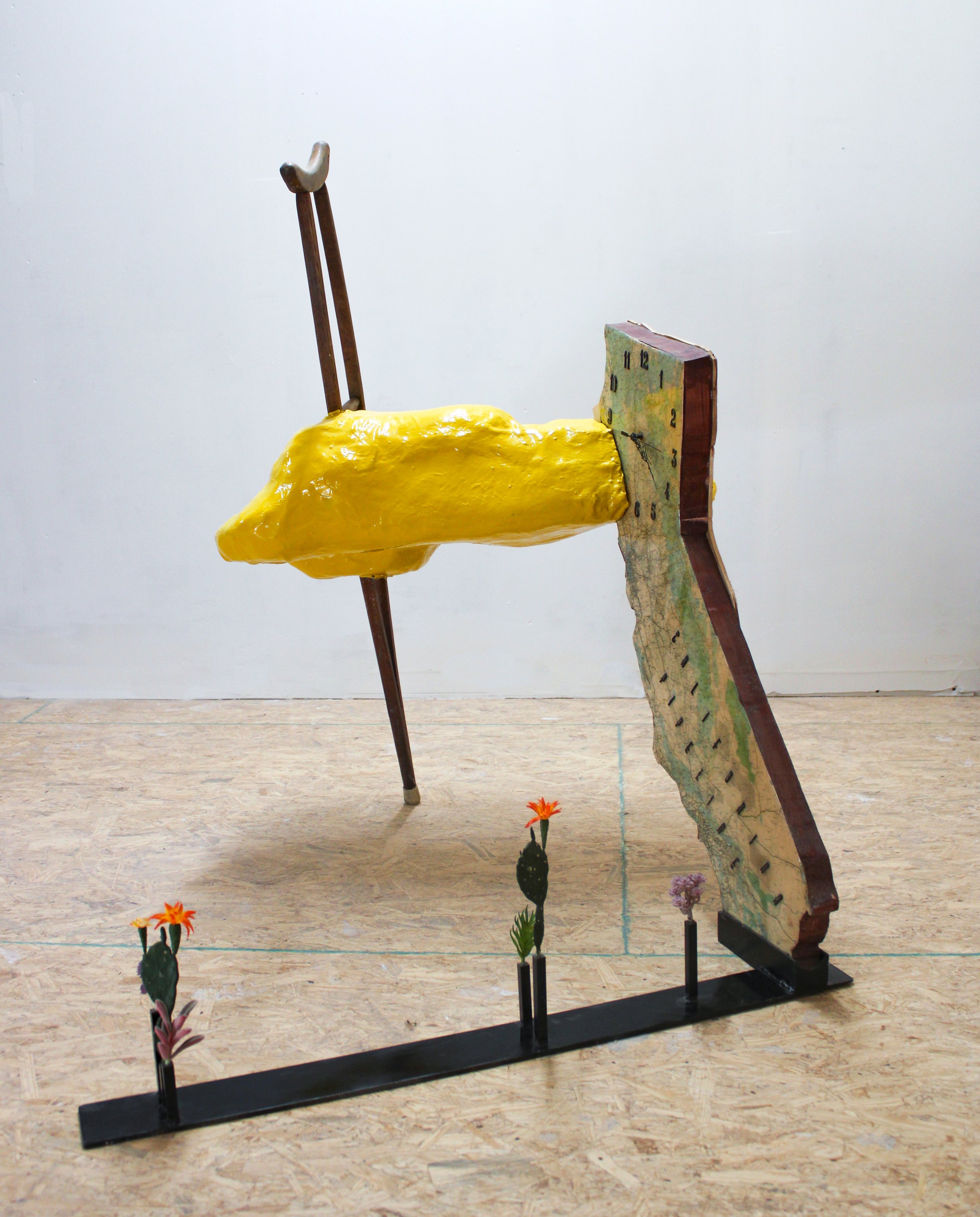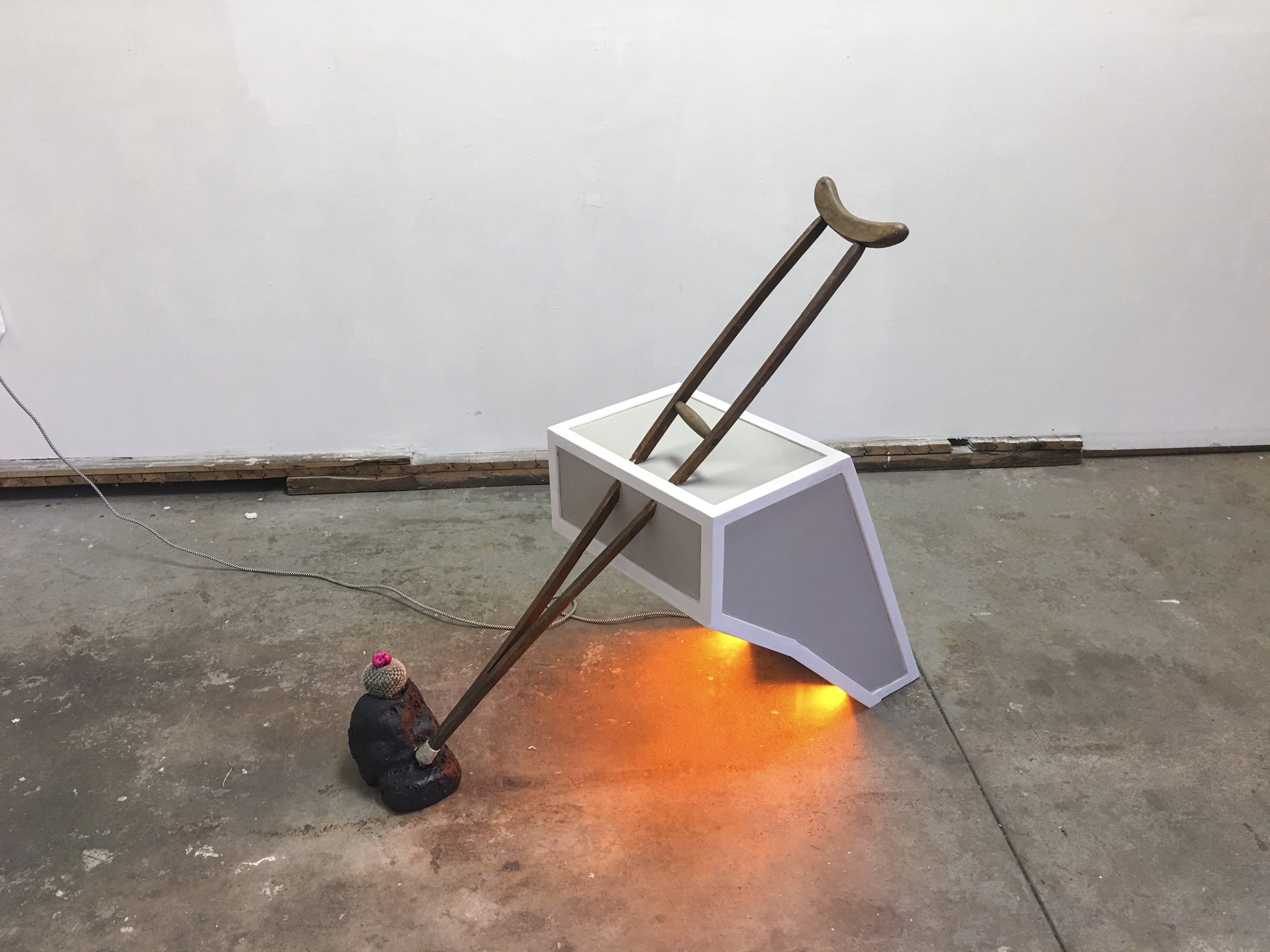Alex Schechter

"Most of my work includes elements of all of these (hand-made, digitally fabricated or found). I get a lot of satisfaction out of hand-making things to look like found or re-purposed objects and vice versa."
Could you tell us a bit about yourself and your background? Where did you study?
I grew up in Northern Wyoming (I’m the first person on record to be born in the town of Moose, WY). I did not think I would go to college and somewhat last minute went to a small school in Iowa called Grinnell College. I ended up with a BA in Religious Studies and planned to go on to do graduate work in that field. I took some time off and subsequently realized that I had no interest in pursuing divinity school, but continued to make artwork in my spare time, bouncing across the country. I ended up going to graduate school for Sculpture at MICA in Baltimore.
Can you talk about the significance of material symbolism in your work, and how you combine traditional woodworking methods, digital fabrication, found objects, video, and animation to explore the myths of the Manifest Destiny and the Wild West?
I think the material symbolism comes from this idea of “embodied meaning.” I’m really drawn to objects that have cultural or symbolic weight, especially in an American context. Cars, maps, houseplants, pop-culture figures, etc. all have such specific connotations around who we are and how we create social structures. I like playing with the signifiers, especially when they have little to do with the “real.” Cowboy iconography is the easiest example of this. There is such a cultural understanding of “The West” that has little to do with the realities of the western United States, but holds a psychic lock on our collective understanding of “America.”
A lot of the exploration of material symbolism can be construed as cultural criticism, but a good deal of it is also just play. I get a lot of enjoyment out of the slippage between what is hand-made, or digitally fabricated or found. Most of my work includes elements of all of these. I get a lot of satisfaction out of hand making things to look like found or re-purposed objects and vise versa. Im rarely satisfied with just having a thing be a thing in and of itself. I want to create environments that point to contradictions or subvert the assumptions of those embodied meanings.
How do your sculptures embody your personal attraction to and rejection of American mythology, and how do they oscillate between functional, performative, and static states to tackle the ego of American culture with both humor and rigor?
My process is fairly research driven. I spend a lot of time reading and writing before I complete object, so the final pieces are often the result of many iterations of excitement around a topic followed by problematizing the issue and then reinterpreting. I’ll often start with an image or idea that really excites me; a still from a John Ford Film, a frame of mech anime, a NASA promotional image, a seminal queer theory text, and then spend a lot of time unpacking what it means in many contexts. The works are a reflection of that, in that they often aren’t exactly one thing. They’re a bit architecture, a bit sculpture, a bit pedestal, a bit display. I’m interested in the uncanny and the absurd, which often comes across as funny.
Your upbringing in rural Wyoming seems to have had a profound influence on your work, particularly in its exploration of the concept of "the Frontier." Can you discuss how your sculptures attempt to collapse utopian ideals of Frontierism and the consequences of its reality?
As I alluded to earlier, there is a huge difference between the mythic “Wild West” and the reality of the west. One of my earliest jobs was being a cowboy (literally moving cows on horseback). Its a deeply un-romantic job, one that is both tedious and grueling. I’m interested in the gap between those. “The West” (or alternatively “The Frontier”) is this ordinal concept in America, the thing we’re always striving to get to, no matter who is living there. We see it in the era of westward expansion and the genocide of indigenous people, in cold war with the space race and the brutalities against people in the global south, and today in the tech boom and the decimation of the new deal and the American social safety net. All of these events have ways of looking at them that are exciting and positivist, as well as real, material consequences that are left in their wake. I think when my work does its job the best, it asks me and the audience to hold both of those realities at the same time.
Further West, 2019
Califorina Pipeline, 2021
Prometaphase (Final), 2022
Marker for the Eschatos 2022
Myth of the West, 2019
A Prophecy of the Squalid and Deserved (for Marc), 2021
Tell us a bit about how you spend your day / studio routine? What is your studio like?
My days are generally divided into Teaching Days and Studio Days. Teaching days are a lot of preparation and active listening in the classroom. As a professor of sculpture, I think a lot about how to get students to effectively communicate ideas, which in turn makes me think about my own work a lot in terms of simplifying and reducing ideas down. Studio days are basically wrangling my attention into a single object for as long as I can stand to focus. I have both a very active brain that jumps around a lot and is easily distracted, so I often have many things going on at once. I’ve begun to lean into it, so if I find myself slipping I can move from a wood project to a digital process or a casting method. As a result, my studio is often shifting layouts and setups. I like to start early in the morning and push as long as I can, usually tapping out in late afternoon or early evening, when I will get some exercise and eat dinner. I try to end every day by drawing for a few hours, which is strangely an activity I can focus on for a long time.
What artwork have you seen recently that has resonated with you?
A few in no particular order
Dana Awartani’s sculptural/performance work
Marc Swanson’s A Memorial to Ice at the Dead Deer Disco
Karinne Smith’s collagen sculptures
Jonathan Santoro’s tire sculptures
Lindsay Merrill’s paintings and drawings
Is there anything new and exciting in the pipeline you would like to tell us about?
I have a solo show at Peep Projects in Philadelphia opening in June and a large public art installation for the city of Las Vegas in June and I’m turning 35 in June, all of which I’m very excited about.
All images are courtesy of the artist
Date of publication: 20/04/23





